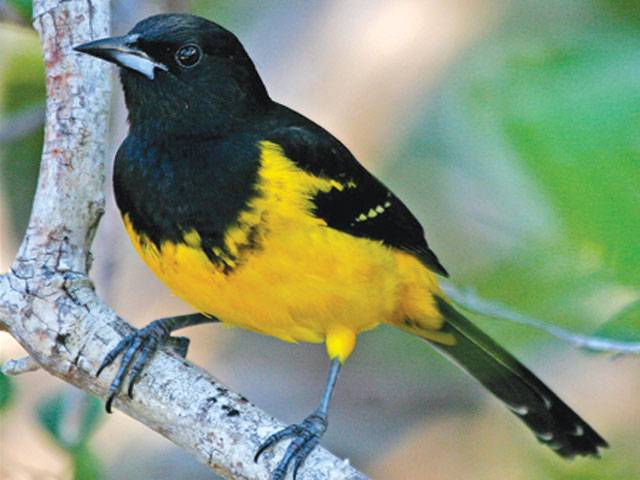WASHINTON - They have long been famed for their singing and now scientists have found that nightingales have the most musical songs because they are better at learning than other species.
After studying 49 different species of songbirds, researchers found that birds with larger ‘higher’ brain areas, such as the nightingale, were capable of producing more notes and complex tunes. Higher brain areas manage learning and cognitive functions, whereas the lower brain is responsible for motor skills.
The researchers compared the size and shape of birds’ brains with the complexity of their song and found those species with a larger higher brain area were able to learn higher numbers of notes. The blackbird managed 108 notes, or syllables, in their songs, the Eurasian skylark reached 341 but the common nightingale boasted an impressive 1,160.
Those species with larger lower brain areas, only able to produce a small number of notes in their songs include the sand martin, tree pipit and yellowhammer. The findings were first published in the Proceedings of the National Academy of Sciences USA and show that a bird’s ability to learn is linked more closely to the structure of their brain, rather than the size.
Professor Tamas Szekely of the Biodiversity Lab at the University of Bath’s biology and biochemistry department said the results could be used to illustrate how brain development might play its part in human linguistic skills. ‘The research gives us an example of the neural biology involved in language learning,’ he told the Observer.
‘It is possible to draw parallels between the ways in which bird brains have developed to learn complex songs and the way human brains have evolved to allow language.’ Previous studies by neuroscientists have found that the extended developemt of higher brain areas such as the cortex and frontal cortex enable humans to speak and both set and achieve goals.
Friday, April 19, 2024
Nightingales have most musical voice

Caption: Nightingales have most musical voice
US vetoes Palestine’s bid for full UN membership
8:27 AM | April 19, 2024
20pc Discos employees involved in power theft: Minister
April 19, 2024
Five govt officials shot dead in D I Khan
April 19, 2024
Parvez Elahi’s indictment delayed again in two cases
April 19, 2024
Hepatitis Challenge
April 18, 2024
IMF Predictions
April 18, 2024
Wheat War
April 18, 2024
Rail Revival
April 17, 2024
Addressing Climate Change
April 17, 2024
Justice denied
April 18, 2024
AI dilemmas unveiled
April 18, 2024
Tax tangle
April 18, 2024
Workforce inequality
April 17, 2024
New partnerships
April 17, 2024
ePaper - Nawaiwaqt
Advertisement
Nawaiwaqt Group | Copyright © 2024





